A landscaping environmental improvement project has recently been completed at Maxim Park to further increase biodiversity on site.
Sustainability has been at the top of the agenda for several years at the Eurocentral business park.
One of the key aims in the parks Environmental, Social and Governance (ESG) policy is to encourage engagement and increase biodiversity on the site through its landscaping.
The car park and the border surrounding building three, the Management Suite, has been the main focus for this latest venture.
Malwina Bieniawska, sustainability and community coordinator, said: “I recently joined Maxim Park team and I couldn’t have had more excited first week watching hundreds of plants arriving every day. I cannot wait to learn about new grasses, flowers, herbs, trees and passing this information to our tenants. I am thrilled to work for and with companies that understand nature is an essential key to balance your life.”
The project
Car park beds
Several ash trees in the car park beds were identified as having ash dieback. With dead limbs creating the potential to cause harm these trees were removed from the beds to protect the safety of all park users and property. You can find out more about ash die back in GP Plantscape’s recent blog.
Within the beds, a remaining handful of overgrown trees were removed to create wildlife habitats around the site in the form of log piles and bug hotels and to add tree varieties more suited to supporting birds, animals and insects.
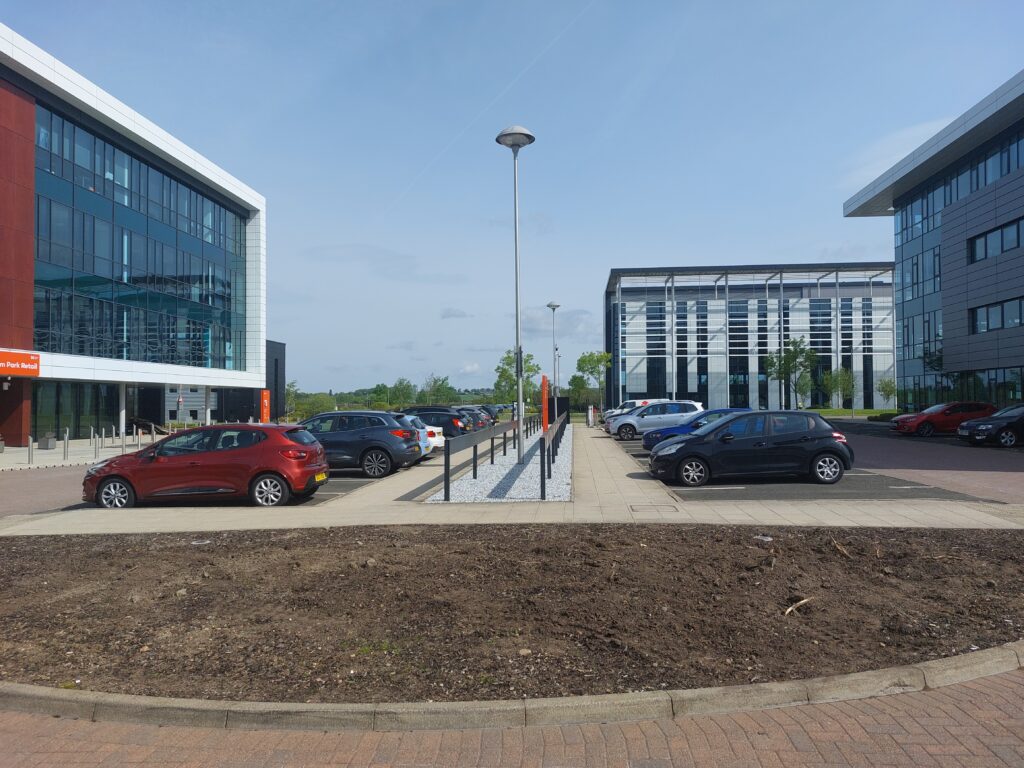
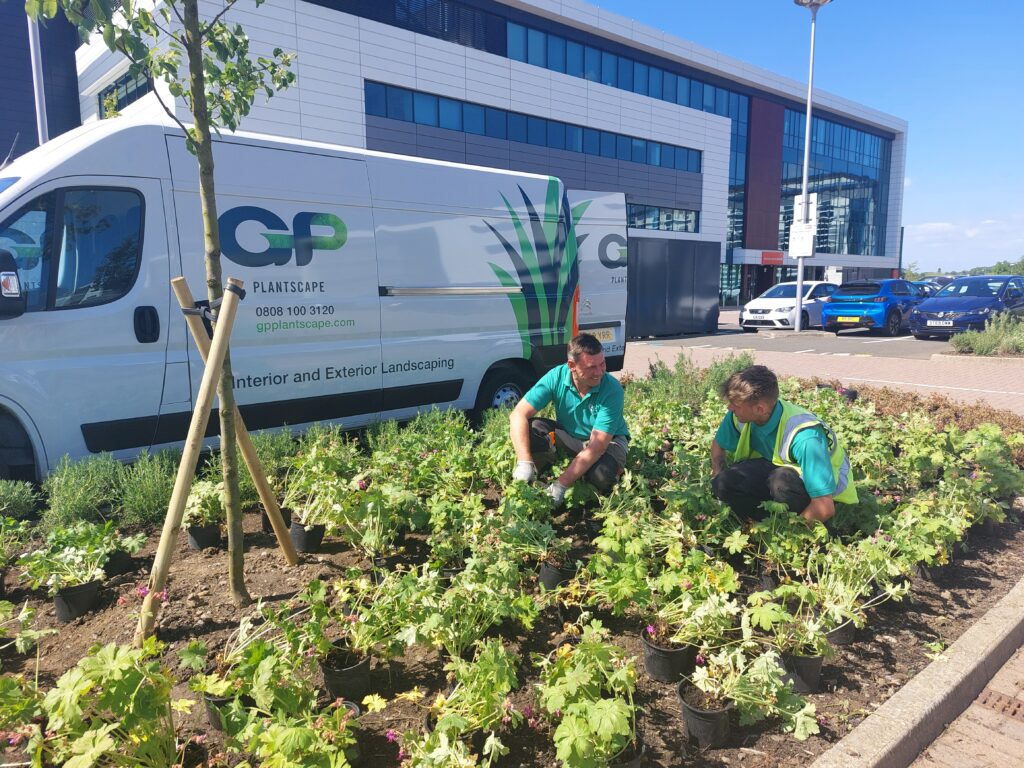
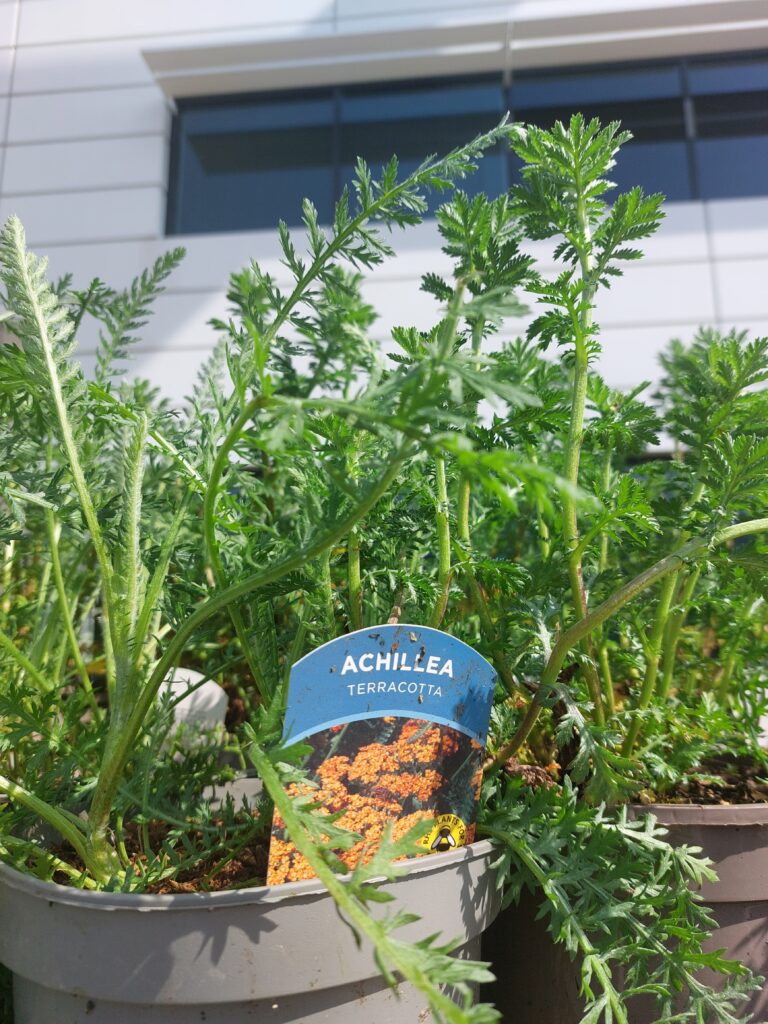
Increasing biodiversity
To further improve the sites sustainability credentials, trees were subsequently planted in the car park beds. All trees and plants for the project were specified by specified by Mike Harrison, creative director and founder at Harrison Stevens. The replacement tree types were chosen specifically for their ability to produce berries and thus provide a food source for wildlife or flowering trees which attract pollinators.
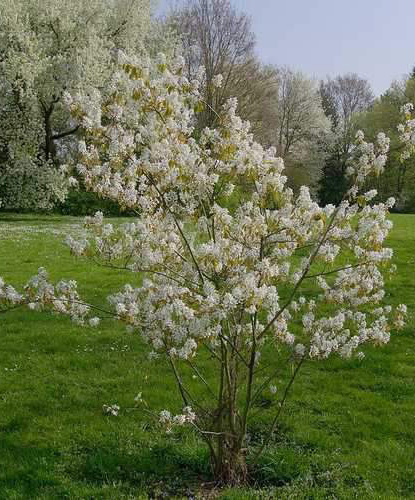
These included: Amelanchier canadensis, Prunus avium Plena, Pyrus calleryana ‘Chanticleer’ and Sorbus aucuparia ‘Autumn Spire’.
As part of the project soil samples were taken from the beds and borders to measure the PH and nutrients in the soil. This ensured the new soil incorporated in the beds matched the existing soil and to enable informed decisions to be made about the most appropriate plant choice for the area.
A selection of perennial plants including Sylvia rosemarius, Geranium ‘Patricia’ and Thymus serpyllum (creeping thyme) were used to complete the car park beds.
Building borders
Around the perimeter of building three a mixture of grasses and perennials were incorporated to both improve the aesthetic appearance of the site and attract pollinators to support threatened bee and butterfly populations.
Grasses
A selection or ornamental grasses were woven into the scheme design to complement perennials. In the summer these provide a lush backdrop against the colourful plants and in the winter, they take control and create their own feature. Easy to maintain, grasses provide additional habitat for a wide range of insects and caterpillars.
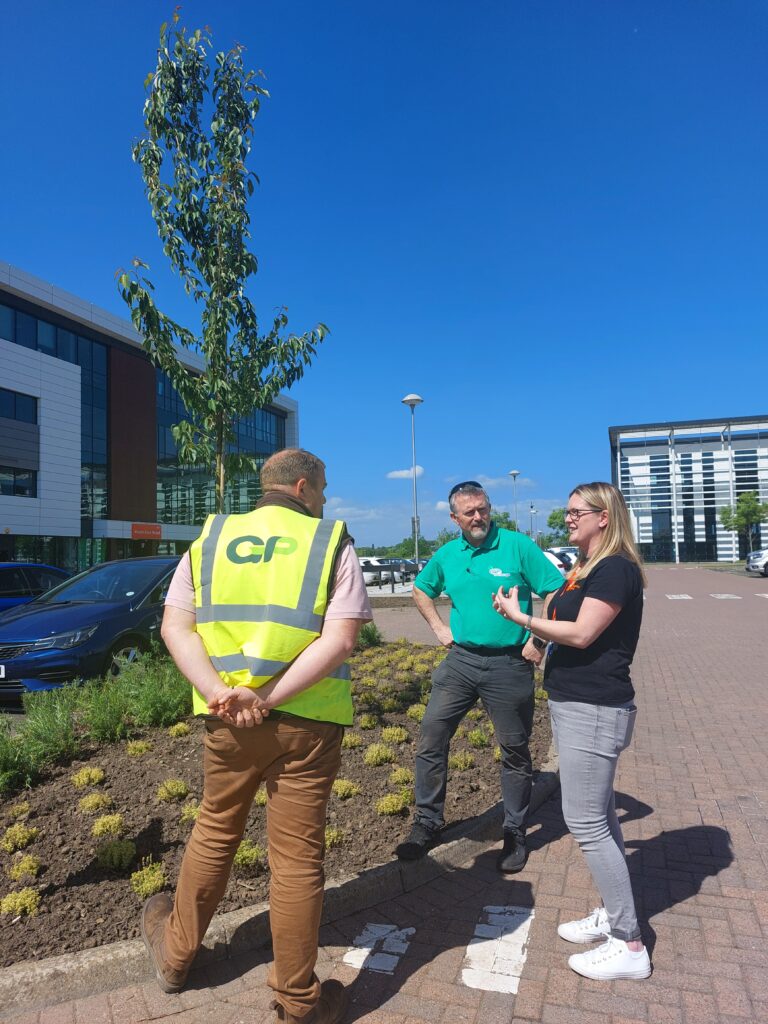
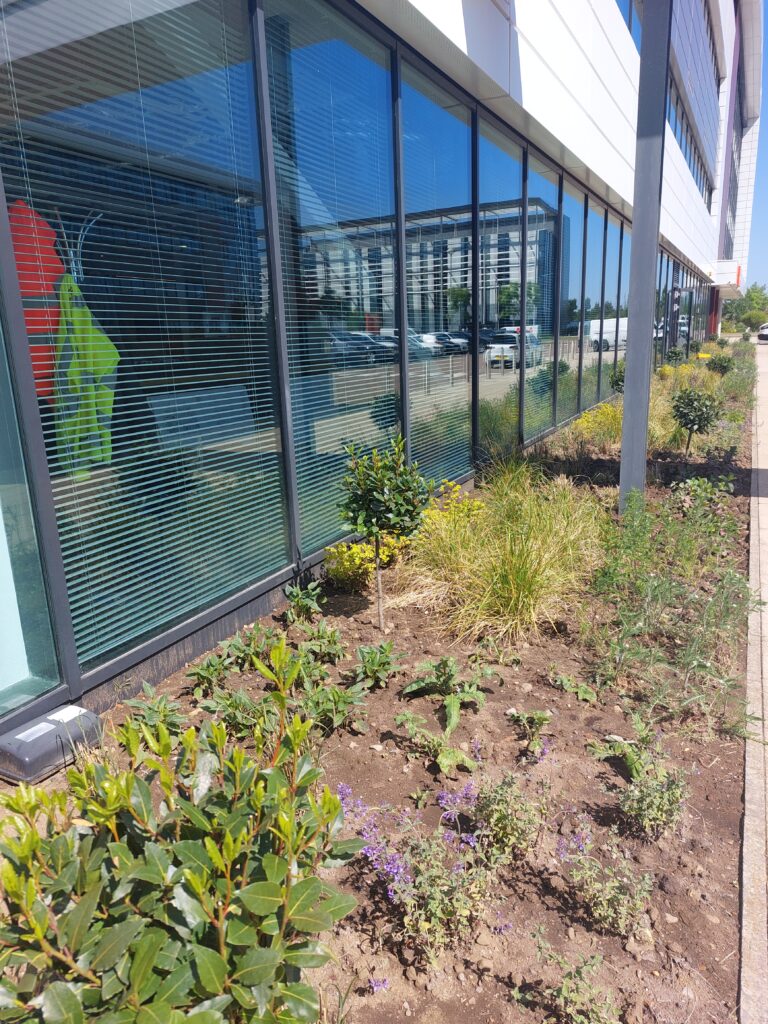
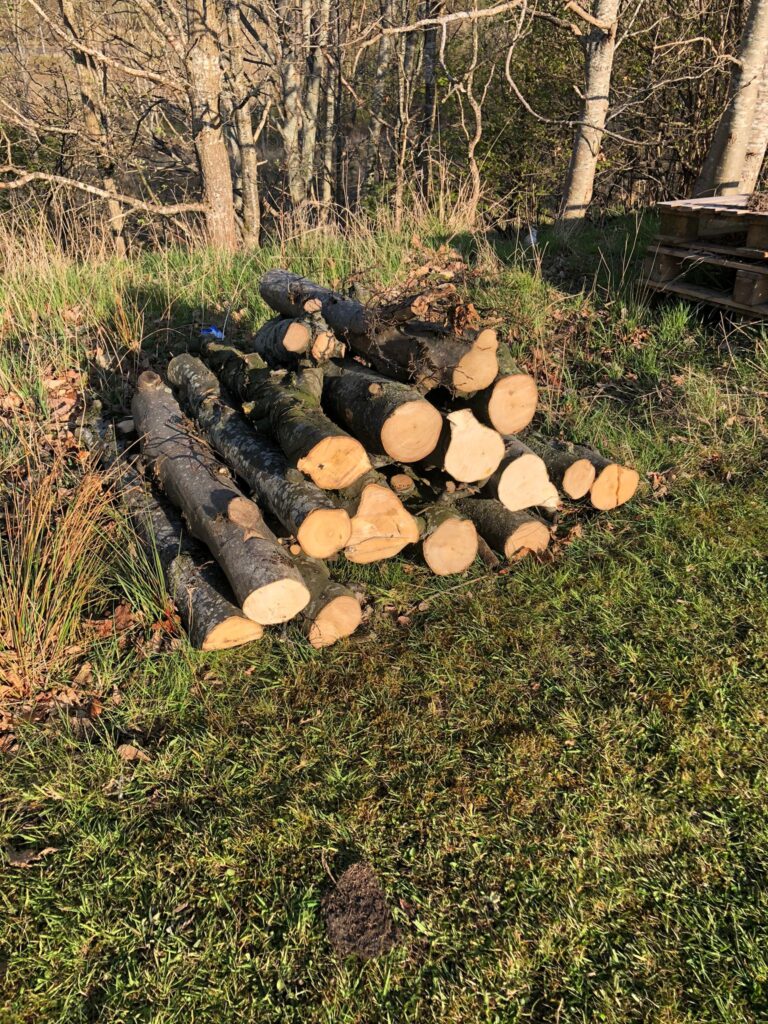
Rabbit resistant
While encouraging wildlife is one of the main targets of the environmental strategy, the large rabbit population presents its own challenges. Adding rabbit resistant perennials was a key part of the project. Varieties included in the planting scheme included: Nepeta ‘Walker’s Low’, Achillea, Salvia and Rudbeckia.
Accomplishing the project
To enhance the sustainability of the scheme, where possible plants were sourced from local suppliers, reducing transportation and supporting the local horticultural economy. All green waste from the landscaping works was taken to a local green recycling centre where it is recycled into a nutritious organic compost to be used in horticultural projects.
‘It has been another great project to collaborate with GP and Harrison Stevens on, delivering an area that is both visually beautiful and has biodiversity at its core. We are already seeing this area come to life in colour and I am lucky enough to have a window seat to enjoy first hand! The GP team have had so many lovely and positive comments while they have been working on this project to date which we are delighted to hear, and we hope to roll out more areas like this across the park over the coming year.

Caroline Baillie
Director of Park ServiceThe wellbeing of all guests on site is a key priority and with research proving that green spaces are good for our mental health the management team are keen to create an environment that encourages people outside to connect with nature and support a better work life balance.
This latest project is just one initiative in a string of many that park management have rolled out over the last few years to encourage increased biodiversity, improve well-being and enhance the sites image.












